 In honor of the return of Twin Peaks, I thought it would be fun to post an old paper I wrote in undergrad for my Forestry Class, I give you, from 2002: Diane: These Trees are Really Something! And yes, there are footnotes! Oh, and spoilers!
In honor of the return of Twin Peaks, I thought it would be fun to post an old paper I wrote in undergrad for my Forestry Class, I give you, from 2002: Diane: These Trees are Really Something! And yes, there are footnotes! Oh, and spoilers!
Before the present time, forests were not viewed as idyllic locations for a weekend getaway but as something far more sinister, a lurking threat. “Forests have always invited the creation of myths and legends, given their size, age, density and abundance of wildlife.” (Guries) The woods were viewed by many cultures as a place to avoid, and a place of great danger. These beliefs of evil in the forests were passed down among generations through stories and folktales throughout the world. From Native American legends to Celtic fairytales, the forest was not a place where you wanted to be found unawares. The forest was a land of unknowns, a land least familiar, and where fear is born. (Bancroft-Hunt 70) It was believed there were “supernatural beings which lived in inaccessible places deep in the forests…vast numbers of dangerous beings with a propensity for causing harm.” (Bancroft-Hunt 70) Danger resided in the woods, whether real or not, the fear was there and the woodlands were avoided wherever possible. Many Native American tribes believed that the spirits of the dead would retreat into the dark of the forest where “these spirits became malevolent, and then their presence in the dense forests was a constant threat to the unwary.” (Bancroft-Hunt 70) Spirits and creatures resided in the depths, but soon progress would take away and dull the fear.
Progress came and diluted the mystique of the forests. “The earlier time was not a golden age from which the present has declined but a strange age to be set right for the people who are here now.” (Handbook of North American Indians 593) Setting things right involved the clearing of forests, hard toil and work for the secular. (Guries) The idea that “law and order stopped at the forest edge with only savages” within gave great impedes to its clearing. (Guries) Whether the savage was mystical beasts and spirits in the minds of the Natives, or the Natives themselves in the minds of the Whites, progress led to the clearing of the forests. With the shrinking of the forests, legends faded. The forest was no longer this place of bewilderment, the dangers within were forgotten, for the time being.
“I’ve never seen so many trees in my life…Diane I almost forgot, got to find out what kind of trees these are, they’re really something.” (Pilot) The American public was introduced to FBI Special Agent Dale Cooper, with his love of coffee, doughnuts and trees, “big majestic” (Pilot), when Twin Peaks premiered on ABC in April 1990 with “a cinematically brilliant 2-hour season opener that sent the country talking.” (Bravo) This quirky show created by David Lynch, “the Jimmy Stewart from Mars”, brought us into the fictional North West logging town of Twin Peaks. (Kirkus) The show began with Agent Cooper’s arrival in Twin Peaks due to the murder of homecoming queen Laura Palmer, but went far beyond the typical detective show, far into the depths of ancient Native American and Celtic mythology. Twin Peaks went into the woods. With David Lynch’s “combination of clarity of eye and a sort of calculated unclarity of mind” (Lawson) he presented us with “an unsettling, sometimes darkly comic vision of the ominous unknown lurking beneath the commonplace and the everyday.” (Bravo) David Lynch brought back the nightmares of what was lurking in the forests that our ancestors knew but we had almost forgotten.
Twin Peaks’ “attention to mood and minute details, and its construction- designed to increase tension, suspicion and unease” never could be more well applied then to the fully realized vision of the forest that was created. (Quill) In an interview David Lynch said; “In my mind this was a place surrounded by woods. That’s important. For as long as anybody can remember, woods have been mysterious places. So they were a character in my mind.” (Rodley 162) This idea of the forest as a unique entity had never been explored on television. This idea that “every forest has its shadow” had long been pushed aside for more pedestrian uses, such as camping and recreation. Twin Peaks went into the “forbidding, although undeniably beautiful, aspect” of the North West where the forests were deceptive; “where high canopies of leaves create a dark, dank twilight world inside the forests, even on sunny days, and where the constant sound of dripping water is evidence of the damp which gives rise to a deep carpet of lush, brilliant moss.” (Bancroft-Hunt 9) For a show to delve into and capture these emotions and fears is unique. In regard to the location David Lynch said: “Those beautiful Douglas Firs. Actually the place is very important. I don’t know how to explain it all. I just pictured this kind of darkness and this wind going through the needles of the firs.” (Quill)
The darkness within the woods surrounding Twin Peaks was felt by all, characters and viewers alike were affected when “scenes [were] intercut with ominous shots of majestic evergreens bending in a stiff wind.” (Quill) These ominous shots bring to mind the feelings local tribes had that “wind whistling through the trees the creak of the tree trunk…were all suggestive of the close proximity of some spirit.” (Bancroft-Hunt) But there was an evil presence, a feeling long before the show delved into mythology to explain the dread. The sheriff, Harry S. Truman, said: “There’s a sort of evil out there. Something very, very strange in these old woods. A darkness, a presence, it takes many forms. But it’s been out there for as long as anyone can remember.” (Episode 3) Twin Peaks contained many odd people who had connections to forest mythology and the activities in the forest. There was the Log Lady, whose log spoke to her and told her portents of what’s to come, such as with the Chinook legends where logs could guide you and help you to the other world. (Ferguson) Major Briggs was a member of the Air Force and Project Blue Book whose work was originally outer space but in the case of Twin Peaks the woods surrounding. There were also Giants and Midgets who figure prominently into Native American and Celtic stories dealing with the woods who guided Cooper on the quest for Laura Palmer’s killer through dreams. (Ferguson) Within the forest surrounding Twin Peaks two aspects of mythologies where predominant. One is that of forest wildlife, mainly owls, being supernatural and dangerous. The other idea is, that within the forest were places, realms that lead to other worlds. Good advice given to Cooper on his arrival in Twin Peaks was “I’ll advise you to keep your eyes on the woods. The woods are wondrous here, but strange.” (Episode 12)
In legend and in Twin Peaks the simple line whispered by the Giant to Agent Cooper sums up all known ideologies, specifically Native American, about owls: “The owls are not what they seem.” (Episode 8) Native American tales speak of owls as dead souls, as a force, an evil that exists within the depths of the forests that is to be avoided, or a dead shaman soul now shape shifter. Or even as a connection to other worlds. “The Land of the Dead is regularly depicted…as being near to the world of the living, even though there is no return. There are direct connections with it via…some animals and birds, particularly owls, are thought to be dead souls.” (Bancroft-Hunt 97) The call of the owl was an omen, “the hooting of owls was also thought of as the voices of spirit people.” (Lewis 31) Within the plot lines of Twin Peaks, not only do the owls signal death and danger, such as they did the night Laura died, but they are also evil in themselves, capable of clouding men’s minds. Owls are present when two characters mysteriously disappear, very reminiscent of the story of the Windigo, an owl like creature who takes captives deep in the woods. (Wood) But when Major Briggs returns he has no memory of his abduction save a giant owl, big “enough to cloud my mind and memory.” (Episode 20) The final aspect of owls in Twin Peaks deals with the supernatural being of Bob. Bob is a possessing spirit, typical of stories of possessing spirits among Natives, a “gluttonous, lecherous trickster-transformer.” (Handbook of North American Indians) Bob is able to enter people making them “kill without recourse.” (Lewis 27) It was Bob while possessing Laura Palmer’s father Leland who actually killed her. Upon Leland’s death, largely brought about by Bob, Bob takes his form that he inhabits when not in human form, that of an owl.
Owls aside, the forests of legend contain great places of danger, and mentions of meeting places of other worlds. In Indian, Celtic and even Tibetan mythology there are portals, places of access to the world of the dead or other worlds. In Celtic and Tibetan myths there where 7 portals and they where located in the woods, under trees. (Linsell 84) Evil and the dead where believed to reside in the places deep within the woods or at specific locations. In Twin Peaks these locations took the form of the White Lodge and the Black Lodge. “The White Lodge is a place where the spirits that rule men and nature here reside. There is also a legend of a place called the black lodge, the shadow self of the white lodge. The legend says that every spirit must pass through there on the way to perfection.” (Episode 18) While the White and Black Lodges do not actually exist in mythology, the idea of a similar place does, and in Blackfeet legend it is said “the dead, who are themselves shadows, live in shadow lodges.” (Grinell 275) Therefore the idea of these shadow lodges for spirits was brought back from legend. In Twin Peaks Agent Cooper’s agenda after solving the murder of Laura Palmer shifts to the finding of the Black Lodge and the entity known as Bob.
It transpires that Agent Cooper believes that Bob comes from the Black Lodge. “I think [the Black Lodge] is where he comes from. I think the Black Lodge is what you have referred to in the past as the evil in these woods.” (Episode 28) The powerful forces in the forest are now directly connected to these two locations and the specific mythologies that they represent. The entrance to the Black Lodge is “a circle of 12 Sycamores, Glastonbury Grove.” (Episode 29) As Agent Cooper says with a finger snap, “The legendary burial place of King Arthur.” (Episode 29) For the location where one world meets the next David Lynch has gone to Arthurian Legend and that of the legendary burial place of King Arthur, Avalon. “For Glastonbury is the Isle of Avalon, to which after his last fatal battle on the River Camelot, King Arthur was by magic ‘bourne away for the healing of his wounds’.” (Trehorne 7) The two places are one and the same. Glastonbury besides being where Arthur died was also the source of many other legends connected with the first meeting of Guinevere, the Holy Grail, and even as a retreat for Lancelot and the other nights when they became hermits following their quests. (Lacy 198) But “there is one factor common to them all, namely a reference in some form or other to a Celtic Underworld or beyond-world, a magical abode of healing and of peace.” (Glastonbury Abbey and the Arthurian Tradition 16/17) And what is the Black Lodge than an entrance to a “beyond-world” where once you get through it you reach the White Lodge where you are at peace. There are also references to Glastonbury being some kind of a labyrinth, which is what Agent Cooper finally faces once inside the Black Lodge, with the same hallway and red room over and over again. (Lacy 199) The inside of the Black Lodge is a strange place where everyone talks backwards and there is always music in the air. Again here we see imagery taken from Native American legend because it was believed “in another realm…where everything was backwards, dwelled the ghosts.” (Normandein 29)
Twin Peaks was a unique television show not relying on convention, but breaking down barriers and delving into the past. Consciously we had left our fears of the forests long behind in myth and legend. But subconsciously in our dreams the fear was still there. “The soul was believed to leave the body at night, when it traveled into the Other World, from which dreams originated.” (Bancroft-Hunt 81/82) In the land of Twin Peaks, this Otherworld, this Black Lodge, where Agent Cooper’s dreams are, lies within the forest. David Lynch went back to this dream world, these ancient fears of the woods that were echoed in Laura: “I know I’m going to get lost in those woods tonight.” (Episode 11) There is an old fear of the woods, preserved deep in us and our tales that David Lynch tapped to bring Twin Peaks to life. Through the Native Americans to the Celts we have evidence of the belief of evil and fear in the woods. An evil and fear that existed again in the world of Twin Peaks. “The sound wind makes through the pines…What we fear in the dark. And what lies beyond that darkness.” (Episode 18)
Bibliography
Bancroft-Hunt, Norman and Werner Forman. People of the Totem: The Indians of the Pacific Northwest. New York: G P Putnam's Sons, 1979.
Bial, Raymond. Lifeways: The Blackfeet. New York: Benchmark Books, 2003.
---.Lifeways: The Tlingit. New York: Benchmark Books, 2003.
Boss, Kit. "David Lynch teased us all Season with his dark, intriguing TV series - and oh, how we loved it - 'Peaks' pique." The Seattle Times. 30 Sept. 1990, Sun. Final ed: L1.
“Bravo creates new programming showcase ‘TV too good for TV’, David Lynch’s ‘Twin Peaks’ cult series, first program acquisition.” PRNewswire 18 Jan. 1993, Entertainment, Television, and Culture.
Chuculate, Eddie D. "'Across Indian Lands' Features Natural Sounds." Albuquerque Journal. 22 September 2000, All ed.: p1.
“Episode 1.” Twin Peaks. ABC, April 12, 1990.
“Episode 3.” Twin Peaks. ABC, April 26, 1990.
“Episode 5.” Twin Peaks. ABC, May 10, 1990.
“Episode 6.” Twin Peaks. ABC, May 17, 1990.
“Episode 8.” Twin Peaks. ABC, September 30, 1990.
“Episode 9.” Twin Peaks. ABC, October 6, 1990.
“Episode 12.” Twin Peaks. ABC, October 27, 1990.
“Episode 14.” Twin Peaks. ABC, November 10, 1990.
“Episode 16.” Twin Peaks. ABC, December 1, 1990.
“Episode 17.” Twin Peaks. ABC, December 8, 1990.
“Episode 18.” Twin Peaks. ABC, December 15, 1990.
“Episode 19.” Twin Peaks. ABC, January 12, 1991.
“Episode 20.” Twin Peaks. ABC, January 19, 1991.
“Episode 21.” Twin Peaks. ABC, January 26, 1991.
“Episode 24.” Twin Peaks. ABC, March 28, 1991.
“Episode 25.” Twin Peaks. ABC, April 4, 1991.
“Episode 26.” Twin Peaks. ABC, April 11, 1991.
“Episode 27.” Twin Peaks. ABC, April 28, 1991.
“Episode 28.” Twin Peaks. ABC, June 10, 1991.
“Episode 29.” Twin Peaks. ABC, June 10, 1991.
Ferguson, Diana. Native American Myths. London: Collins and Brown, 2001.
Fraser, Rob. “A to Z: Twin Peaks.” Cult TV May 1998: Season 2, Episode 5.
Glastonbury Abbey and the Arthurian Tradition. Edited by James P. Carly. Cambridge: D S Brewer, 2001.
Grinell, George Bird. Blackfoot Lodge Tales: The Story of a Prairie People. Lincoln: Bison Book, University of Nebraska Press, 1962.
Guries, Raymond. Forests of History and Legend. Forestry 100 Handout. 12 September 2002.
Handbook of North American Indians: Vol. 7 Northwest Coast. General Editor Williams C. Sturtevant and Volume Editor Wayne Stuttles. Washington: Smithsonian Institution, 1990.
Kirkus Review. "Some of Me." The Kirkus Service, 1997.
Lawson, Mark. "Red herrings and cherry pie; It's the television series people were talking about the morning before, never mind the morning after. If you missed the first episode of David Lynch's 'Twin Peaks', don't worry: with this thriller, plot doesn't come into it." The Independent (London). 28 Oct. 1990, Sun. ed: p.16.
Lewis, Claudia. Indian Families of the Northwest Coast: The Impact of Change. Chicago: The University of Chicago Press Chicago, 1970.
Linsell, Tony. Anglo-Saxon Mythology, Migration and Magic. Middlesex: Anglo-Saxon Books, 1992.
Lynch, David. Images. New York: Hyperion, 1994.
Marriott, Alice and Carol K. Rachlin. American Indian Mythology. New York: Thomas Y. Crowell Company, 1968.
Nadelson, Reggie. "A Nation gripped by something very weird; what's this? David Lynch's soap opera Twin Peaks is a bigger hit than Dallas. Reggie Nadelson faces up to a new obsession." The Independent (London). 23 May 1990:p.20.
The New Arthurian Encyclopedia. Edited by Norris J, Lacy. New York: Garland Publishing, 1996.
Norman, Howard. Northern Tales: Traditional Stories of Eskimo and Indian Peoples Selected and Edited by Howard Norman. New York: Pantheon Books, 1990.
Normandein, Christine. Echoes of the Elders, The Stories and Paintings of Chief Lelooska edited by Christine Normandein. New York: DK, 1997.
“Pilot.” Twin Peaks. ABC, April 8, 1990.
Quill, Greg. "Blue Velvet TV for Twin Peaks, David Lynch is scaling his odd and disturbing brand of film making to the size of the small screen, with a miniseries that is likely to resemble nothing you've ever seen on TV before." Toronto Star. 1 April 1990, Sun. 2nd ed: C1.
Rodley, Chris. Lynch on Lynch. London: Faber Faber, 1997.
Royle, Nicholas. "A to Z of David Lynch." Time Out. 12 Dec. 2001: p.32-34.
Trehorne, R. F. The Glastonbury Legends. London: The Gesset Press, 1967.
Wood, Douglas. The Windigo’s Return. New York: Simon and Schuster, 1996.
Young, Judy Dockery and Richard Dockery Young. Race with Buffalo and Other Native American Stories for Young Readers Collected and Edited by Richard and Judy Dockery Young. Little Rock: August House Publishers Inc, 1994.
 One of the best scenes in Pride and Prejudice is Lady Catherine de Bourgh's smack down of Lizzy that doesn't quite go to plan. She had intended for Lizzy to meekly agree to all her demands with regards to her nephew, therefore it is quite a shock when Lizzy doesn't play ball. Yes, Darcy's declaration of love might be the most loved, and the opening line the most quoted, but to me, NOTHING beats this scene. What Lady Catherine says flows off Lizzy like water off a duck's back and this makes her incensed, crying out "This is Not to be Bourne!" Lady Catherine can not believe her words are insignificant to Lizzy, yet they are, which lead to how I handled the treatment of this piece. I used the same paper stock as I did for my first piece in this series, "Every Savage Can Dance." Yet I reversed the treatment of the figures. In "Every Savage Can Dance" I used pencil over a ground of gesso. This lead to the figures popping out of the background and having definition with the line work on top. Here I didn't want the figures to pop. I wanted them kind of ghosted, to show that Lady Catherine's words will not impact Lizzy's decisions one bit. Therefore I laid down the pencil first and laid the gesso over it, obscuring the lines. Lady Catherine might think she has impact, but she has left no impression at all. While I admit that this piece might not be the most dramatic that I made in this series, I do think that it went exactly to plan with getting the meaning across. So shall I call it a success?
One of the best scenes in Pride and Prejudice is Lady Catherine de Bourgh's smack down of Lizzy that doesn't quite go to plan. She had intended for Lizzy to meekly agree to all her demands with regards to her nephew, therefore it is quite a shock when Lizzy doesn't play ball. Yes, Darcy's declaration of love might be the most loved, and the opening line the most quoted, but to me, NOTHING beats this scene. What Lady Catherine says flows off Lizzy like water off a duck's back and this makes her incensed, crying out "This is Not to be Bourne!" Lady Catherine can not believe her words are insignificant to Lizzy, yet they are, which lead to how I handled the treatment of this piece. I used the same paper stock as I did for my first piece in this series, "Every Savage Can Dance." Yet I reversed the treatment of the figures. In "Every Savage Can Dance" I used pencil over a ground of gesso. This lead to the figures popping out of the background and having definition with the line work on top. Here I didn't want the figures to pop. I wanted them kind of ghosted, to show that Lady Catherine's words will not impact Lizzy's decisions one bit. Therefore I laid down the pencil first and laid the gesso over it, obscuring the lines. Lady Catherine might think she has impact, but she has left no impression at all. While I admit that this piece might not be the most dramatic that I made in this series, I do think that it went exactly to plan with getting the meaning across. So shall I call it a success?




















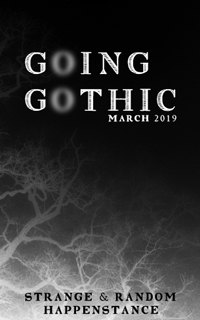
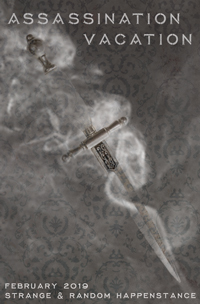
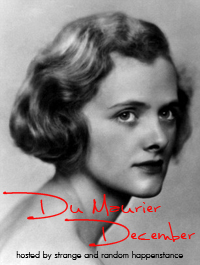
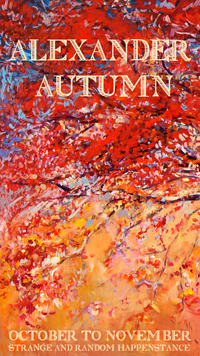
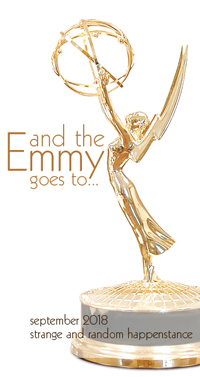




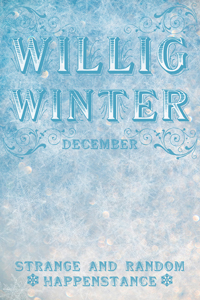

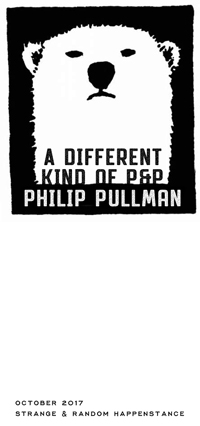



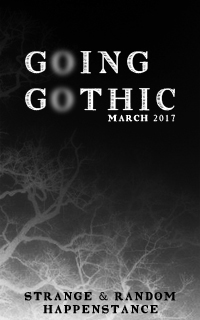

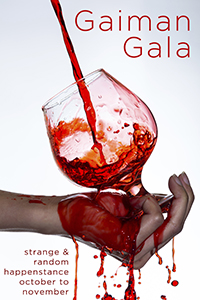
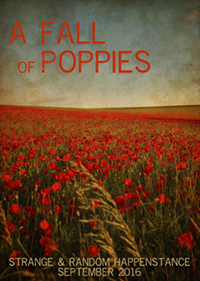






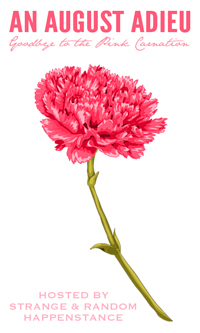




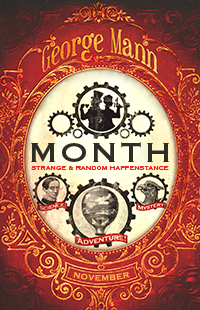


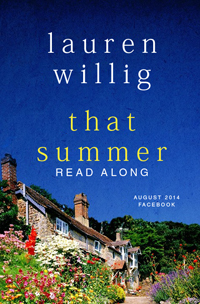



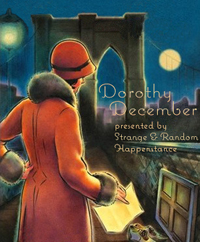

 Gwendy's Button Box by Stephen King and Richard Chizmar
Gwendy's Button Box by Stephen King and Richard Chizmar The Dispatcher by John Scalzi
The Dispatcher by John Scalzi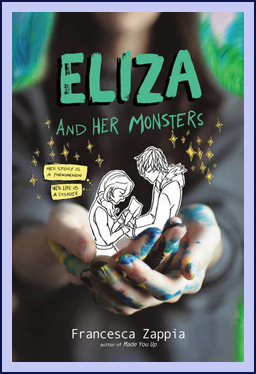 Eliza and Her Monsters by Francesca Zappia
Eliza and Her Monsters by Francesca Zappia Ex Libris: Stories of Librarians, Libraries and Lore edited by Paul Guran
Ex Libris: Stories of Librarians, Libraries and Lore edited by Paul Guran Aunt Dimity and the Widow's Curse by Nancy Atherton
Aunt Dimity and the Widow's Curse by Nancy Atherton The Descent of Man by Grayson Perry
The Descent of Man by Grayson Perry "It is Enough to Know They are Discovered" captures that moment when Lizzy and Jane finally learn that Lydia and Wickham have been found in London and, for that moment, "it is enough to know." Whatever else happens in the uncertain future must be tempered by the fact their location is no longer unknown in that vast and teaming metropolis. The original illustration by the brothers Brock includes Mr. Bennet as well, but I felt like he didn't fit. He added a domineering presence, at least in the illustration, and I thought that this was far more of an intimate moment between two sisters regarding their concern for their youngest sibling. Which is why I decided to render the image in watercolor. This is a medium that girls of the Regency period would have been familiar with, and though the Bennet sisters don't have any pretensions or inclinations in the direction of non-musical talents, they would be familiar with it nonetheless. As for the paper choice, I used paper that had flowers in it. The reason for this is twofold, one of the things that stuck me about Pride and Prejudice is the amount of time spent out of doors. Lizzy always has a healthy glow of exercise and exertion about her. But more importantly, they read this letter out in the little copse near there house. Most likely it's to keep away from the prying eyes of Mrs. Bennet, but I still feel that this intimate moment needs to be in the context of the vastness of nature.
"It is Enough to Know They are Discovered" captures that moment when Lizzy and Jane finally learn that Lydia and Wickham have been found in London and, for that moment, "it is enough to know." Whatever else happens in the uncertain future must be tempered by the fact their location is no longer unknown in that vast and teaming metropolis. The original illustration by the brothers Brock includes Mr. Bennet as well, but I felt like he didn't fit. He added a domineering presence, at least in the illustration, and I thought that this was far more of an intimate moment between two sisters regarding their concern for their youngest sibling. Which is why I decided to render the image in watercolor. This is a medium that girls of the Regency period would have been familiar with, and though the Bennet sisters don't have any pretensions or inclinations in the direction of non-musical talents, they would be familiar with it nonetheless. As for the paper choice, I used paper that had flowers in it. The reason for this is twofold, one of the things that stuck me about Pride and Prejudice is the amount of time spent out of doors. Lizzy always has a healthy glow of exercise and exertion about her. But more importantly, they read this letter out in the little copse near there house. Most likely it's to keep away from the prying eyes of Mrs. Bennet, but I still feel that this intimate moment needs to be in the context of the vastness of nature.  When I was working towards my BS in art at the UW-Madison I had an assignment to do a series of pieces, all the same size, that were interconnected. At the time I was heavily playing tabletop card games like Steve Jackson's Munchkin, so I envisioned the project as a set of playing cards that explained my personality. There was "A Vicious Feline of Extreme Loyalty" at plus three points that cancelled out my "Inability to Figure Out Your ID," existential angst being a college prerequisite. There was a good fairy balanced by a bad fairy, and physical traits like back problems and corrective vision. But it was my "Jane Austen/Darcy Obsession" at minus one point that captured my imagination. Is it any surprise? I was admittedly an addict. But I viewed it as a gentle and genteel addiction, hence it only encumbering me to a factor of minus one. Yet in creating this piece inspiration stuck and I had this need to continue on, to re-interpret famous Jane Austen illustrations in new mediums that captured the emotion behind the image. Jane Austen had sparked my sensibilities to create and create I must!
When I was working towards my BS in art at the UW-Madison I had an assignment to do a series of pieces, all the same size, that were interconnected. At the time I was heavily playing tabletop card games like Steve Jackson's Munchkin, so I envisioned the project as a set of playing cards that explained my personality. There was "A Vicious Feline of Extreme Loyalty" at plus three points that cancelled out my "Inability to Figure Out Your ID," existential angst being a college prerequisite. There was a good fairy balanced by a bad fairy, and physical traits like back problems and corrective vision. But it was my "Jane Austen/Darcy Obsession" at minus one point that captured my imagination. Is it any surprise? I was admittedly an addict. But I viewed it as a gentle and genteel addiction, hence it only encumbering me to a factor of minus one. Yet in creating this piece inspiration stuck and I had this need to continue on, to re-interpret famous Jane Austen illustrations in new mediums that captured the emotion behind the image. Jane Austen had sparked my sensibilities to create and create I must! Dragon Teeth by Michael Crichton
Dragon Teeth by Michael Crichton The Only Child by Andrew Pyper
The Only Child by Andrew Pyper Lord of Shadows by Cassandra Clare
Lord of Shadows by Cassandra Clare Rich People Problems by Kevin Kwan
Rich People Problems by Kevin Kwan Jessica Jones: Uncaged! by Brian Michael Bendis
Jessica Jones: Uncaged! by Brian Michael Bendis Sidney Chambers and the Persistence of Love by James Runcie
Sidney Chambers and the Persistence of Love by James Runcie In honor of the return of Twin Peaks, I thought it would be fun to post an old paper I wrote in undergrad for my Forestry Class, I give you, from 2002: Diane: These Trees are Really Something! And yes, there are footnotes! Oh, and spoilers!
In honor of the return of Twin Peaks, I thought it would be fun to post an old paper I wrote in undergrad for my Forestry Class, I give you, from 2002: Diane: These Trees are Really Something! And yes, there are footnotes! Oh, and spoilers! If one were to walk in the footsteps of Jane Austen's Pride and Prejudice I think we can all agree that when one thinks of Pride and Prejudice there is only one destination possible, and that's Pemberley. This is especially beguiling to American readers where we seriously don't have grand manor houses or even castles strewn about the countryside protected by a National Trust. But as Lizzy and her Aunt and Uncle Gardiner clearly show, these great houses were just as beguiling to Brits over two hundred years ago. Because who doesn't like to wander around big beautiful houses seeing famous works of art in a setting that isn't strictly speaking a museum? But the question becomes, where is Pemberley? You could go to Lyme Park, which was the house used in the BBC miniseries, but to me, more known for being used in a season three episode of Red Dwarf, and yes, I know I have weird priorities. Or you could have even bought Wentworth Park fairly recently, where they were claiming that the house's notoriety came from the fact it was the basis for Pemberley. A "fact" that no one has really ever agreed on. But to me I think Pemberley as Austen saw it is most likely
If one were to walk in the footsteps of Jane Austen's Pride and Prejudice I think we can all agree that when one thinks of Pride and Prejudice there is only one destination possible, and that's Pemberley. This is especially beguiling to American readers where we seriously don't have grand manor houses or even castles strewn about the countryside protected by a National Trust. But as Lizzy and her Aunt and Uncle Gardiner clearly show, these great houses were just as beguiling to Brits over two hundred years ago. Because who doesn't like to wander around big beautiful houses seeing famous works of art in a setting that isn't strictly speaking a museum? But the question becomes, where is Pemberley? You could go to Lyme Park, which was the house used in the BBC miniseries, but to me, more known for being used in a season three episode of Red Dwarf, and yes, I know I have weird priorities. Or you could have even bought Wentworth Park fairly recently, where they were claiming that the house's notoriety came from the fact it was the basis for Pemberley. A "fact" that no one has really ever agreed on. But to me I think Pemberley as Austen saw it is most likely  It's not just that Austen knew of the house and compares Pemberley to Chatsworth that makes Chatsworth a good contender, as well as both real and fictional houses being in Derbyshire, it's also actually been used as Pemberley in the P.D. James continuation Death Comes to Pemberley as well as in the 2005 adaptation of Pride and Prejudice starring Matthew Macfadyen. In fact they have the Matthew Macfadyen marble bust still there, though they request that you don't buss the bust. They have a Regency Ball there every summer which I long to be invited to! But even if that doesn't get you excited there is a deal breaker in my mind that makes this great house a must stop, and that's the connection to the Mitfords. Deborah Mitford, one of the famous Mitford sisters, was the Duchess of Devonshire and the family seat is Chatsworth. She not only spent her life surrounded by the literary, but she helped save the house after the tragic death of the heir and went on to make it a thriving business that allowed her to extensively expand the house's art collection with modern masters. So go for your Darcy dream, stay, and you can literally
It's not just that Austen knew of the house and compares Pemberley to Chatsworth that makes Chatsworth a good contender, as well as both real and fictional houses being in Derbyshire, it's also actually been used as Pemberley in the P.D. James continuation Death Comes to Pemberley as well as in the 2005 adaptation of Pride and Prejudice starring Matthew Macfadyen. In fact they have the Matthew Macfadyen marble bust still there, though they request that you don't buss the bust. They have a Regency Ball there every summer which I long to be invited to! But even if that doesn't get you excited there is a deal breaker in my mind that makes this great house a must stop, and that's the connection to the Mitfords. Deborah Mitford, one of the famous Mitford sisters, was the Duchess of Devonshire and the family seat is Chatsworth. She not only spent her life surrounded by the literary, but she helped save the house after the tragic death of the heir and went on to make it a thriving business that allowed her to extensively expand the house's art collection with modern masters. So go for your Darcy dream, stay, and you can literally  Pride and Prejudice
Pride and Prejudice The House at Bishopsgate by Kate Hickman
The House at Bishopsgate by Kate Hickman York: The Shadow Cipher by Laura Ruby
York: The Shadow Cipher by Laura Ruby Behind the Mask edited by Tricia Reeks and Kyle Richardson
Behind the Mask edited by Tricia Reeks and Kyle Richardson Pride and Prejudice by Jane Austen
Pride and Prejudice by Jane Austen Yes, I could wax lyrical like Marianne about the beauty of Sussex where Norland Park is located, or rhapsodize about Devonshire and Barton Cottage, but I won't. Because to me the most important location in all of Sense and Sensibility is actually London. While other books by Austen mention and even visit London through the narratives of other characters, no other book uses it so successfully as a backdrop to our heroines heartaches as Sense and Sensibility. To me the heart of the book is that time in Mrs. Jennings's house on Berkeley Street in London, in the heart of Mayfair. While I most think of anything "Berkeley" in London as being associated with that lovely miniseries Berkely Square, I must now make a place for Elinor and Marianne there as well. While much of the short street is now filled with the modern, from Starbucks to a Holiday Inn, the facades of many of the shops hearken back to an older time.
Yes, I could wax lyrical like Marianne about the beauty of Sussex where Norland Park is located, or rhapsodize about Devonshire and Barton Cottage, but I won't. Because to me the most important location in all of Sense and Sensibility is actually London. While other books by Austen mention and even visit London through the narratives of other characters, no other book uses it so successfully as a backdrop to our heroines heartaches as Sense and Sensibility. To me the heart of the book is that time in Mrs. Jennings's house on Berkeley Street in London, in the heart of Mayfair. While I most think of anything "Berkeley" in London as being associated with that lovely miniseries Berkely Square, I must now make a place for Elinor and Marianne there as well. While much of the short street is now filled with the modern, from Starbucks to a Holiday Inn, the facades of many of the shops hearken back to an older time. Going Northwest up Berkley Street to Berkley Square away from Piccadilly you will see some remaining Georgian architecture on the far side of the park. Yes, there's still the occasional more modern edifice, more Victorian or Art Nouveau, but what's wonderful about London is the old is there, just hiding around a corner, waiting for you to find it. In fact comparing this map from 1830 with modern day London you can see how little has changed in almost two-hundred years! If you're wanting to walk in the footsteps of Sense and Sensibility I couldn't recommend anything more fun than walking around Mayfair. From Berkley Street it's a short seven minute walk to Conduit Street and the Middletons, and two streets over are the Palmers in Hanover Square. If you decide to take a slight detour north into Marylebone beware, because Willoughby lurks near there, as do the Dashwoods! We won't even discuss where Lucy Steele lives, it's so unfashionable!
Going Northwest up Berkley Street to Berkley Square away from Piccadilly you will see some remaining Georgian architecture on the far side of the park. Yes, there's still the occasional more modern edifice, more Victorian or Art Nouveau, but what's wonderful about London is the old is there, just hiding around a corner, waiting for you to find it. In fact comparing this map from 1830 with modern day London you can see how little has changed in almost two-hundred years! If you're wanting to walk in the footsteps of Sense and Sensibility I couldn't recommend anything more fun than walking around Mayfair. From Berkley Street it's a short seven minute walk to Conduit Street and the Middletons, and two streets over are the Palmers in Hanover Square. If you decide to take a slight detour north into Marylebone beware, because Willoughby lurks near there, as do the Dashwoods! We won't even discuss where Lucy Steele lives, it's so unfashionable! Based on a True Story by Delphine De Vigan
Based on a True Story by Delphine De Vigan The Girl Who Knew Too Much by Amanda Quick
The Girl Who Knew Too Much by Amanda Quick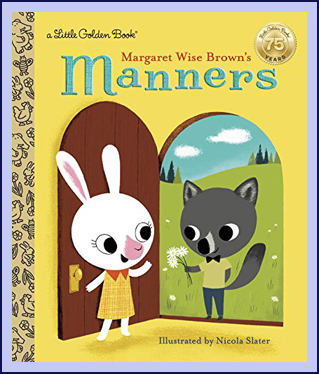 Manners by Margaret Wise Brown
Manners by Margaret Wise Brown The New York Times Footsteps by The New York Times
The New York Times Footsteps by The New York Times Sense and Sensibility
Sense and Sensibility


















